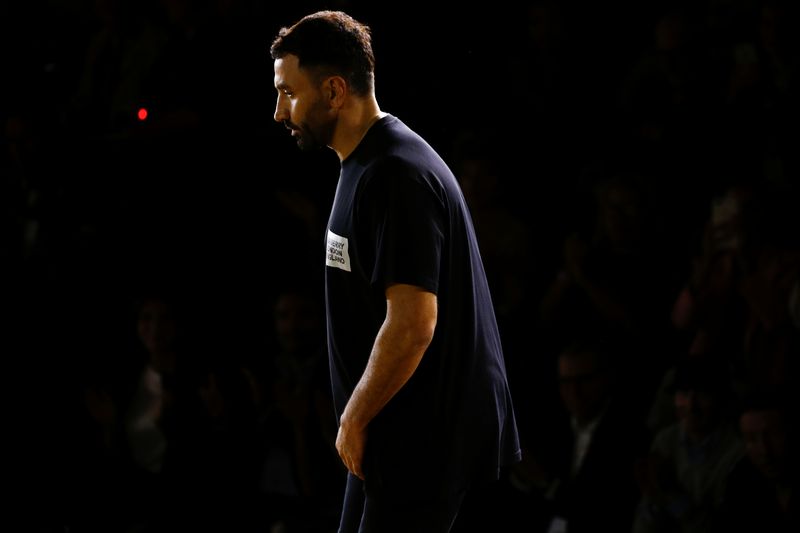By Paul Sandle
LONDON (Reuters) - Burberry Group (OTC:BURBY) has appointed Daniel Lee as its new chief creative officer, replacing Riccardo Tisci, who is stepping down after presenting his final runway show for the British luxury brand on Monday.
The end of Tisci's near five-year tenure at Burberry follows the arrival of Jonathan Akeroyd as new chief executive earlier this year. Chief Financial Officier Julie Brown is also leaving to join drugmaker GSK.
Lee was creative director at Italy's Bottega Veneta from 2018 to 2021, and has previously worked at Celine, Maison Margiela, Balenciaga and Donna Karan, Burberry said on Wednesday.
The 35-year-old Central Saint Martins graduate successfully ignited the Italian label's popularity with younger consumers and boosted sales with popular accessories including pillowy leather clutch handbags and slip-on heels.
He departed suddenly from the Kering-owned brand last November, just three years into his position.
Lee, born in Yorkshire where Burberry manufactures its famous trench coats, said he was honoured to join the British fashion house and build on Tisci's legacy.
Shares in Burberry rose 3.2% in early deals on Wednesday, one of the few gainers in the FTSE 100 index which was 2% lower.
Stifel analyst Rogerio Fujimori said the change should be seen as a long-term positive given Lee's successful track record in ready-to-wear.
Luca Solca at Bernstein said Lee could develop product categories such as handbags and shoes.
"So far, the British brand has struggled to make its mark in these categories and create high profile iconic products," he said. "Daniel (Lee) could open this opportunity."
However, the change could also increase the level of uncertainty and perceived lack of direction, following recent departures of the CEO and CFO and as the macroeconomic situation potentially deteriorates, said Thomas Chauvet of Citi.
Tisci was the creative force behind former chief executive Marco Gobbetti's strategy to elevate the position of the 166-year-old brand in the luxury sector.

His designs, many of which featured a new Thomas Burberry "TB" monogram, strengthened the brand's streetwear offer and attracted a younger and more diverse community of customers.
Stifel's Fujimori said his collections were however "not able to create the strong buzz seen at the hottest luxury brands in the past five years", such as Dior, YSL, Bottega Veneta and Balenciaga, which Burberry needed to accelerate top-line growth.